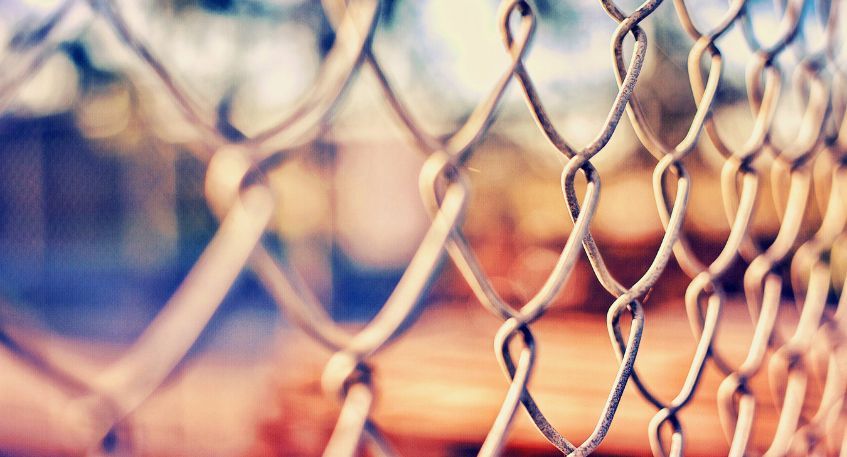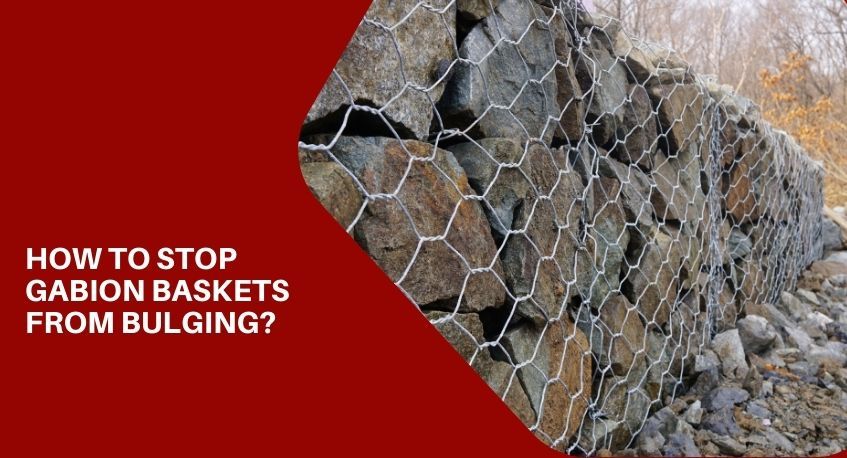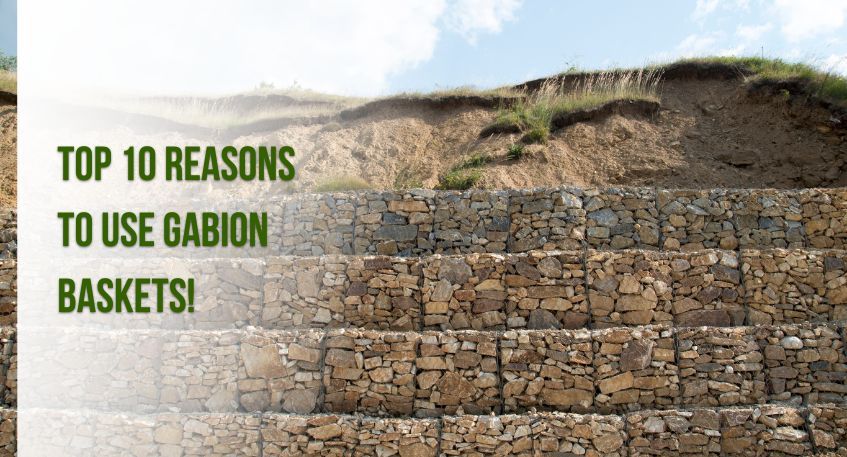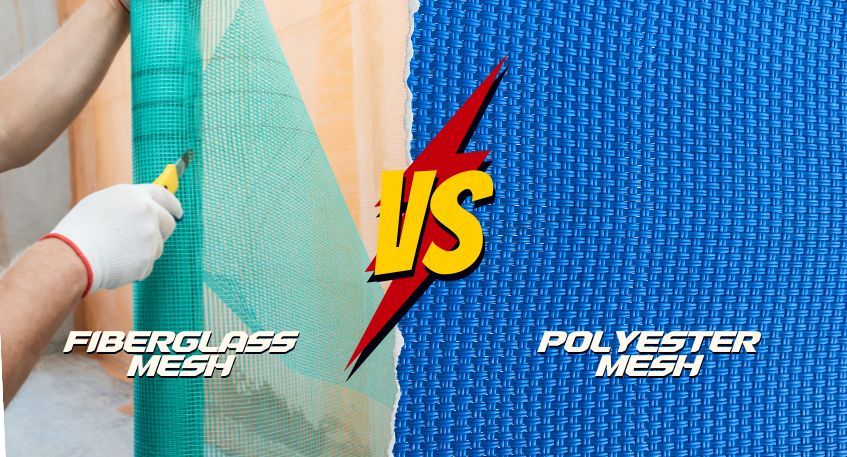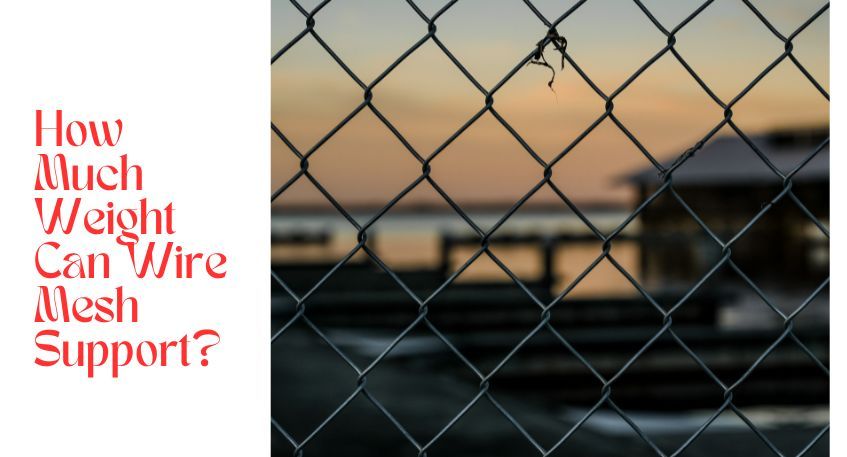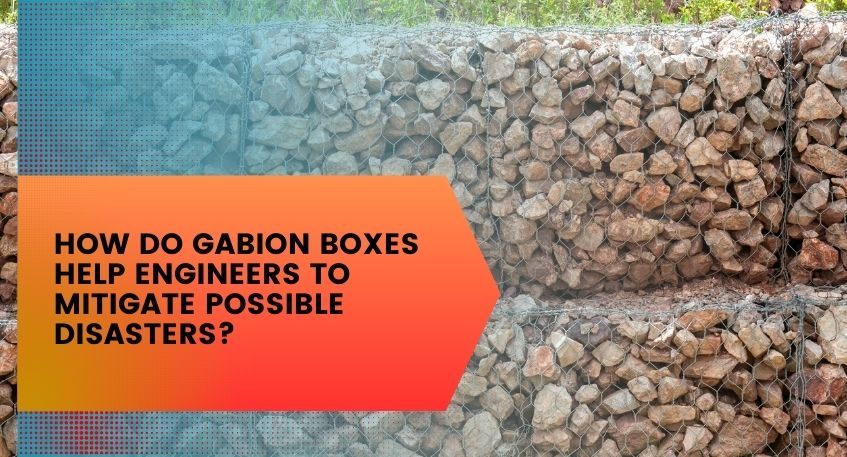How Do You Measure Chain Link Mesh for A Fence?
Installing a chain link fence requires precise measurements to ensure a proper fit and a secure enclosure. While it may appear daunting at first, measuring chain link wire mesh for a fence is a straightforward process. In this blog post, we will guide you through the steps involved in measuring chain link mesh accurately. By following these guidelines, you can achieve a successful fence installation that meets your specific needs. Step 1: Understanding The Terminology Let's familiarise ourselves with some key terms linked to chain link fencing before getting into the measurement process: a. Mesh Size: This refers to the dimensions of the diamond-shaped openings in the chain link fabric. It is typically measured in inches or millimeters and determines the fence's level of visibility and security. b. Gauge: The gauge represents the thickness of the wire used in the chain link fabric. A lower gauge number indicates a thicker wire and a stronger fence. Step 2: Determine Fence Length The first step in measuring chain link mesh is to determine the length of the fence line where the mesh will be installed. Use a measuring tape to measure the desired length accurately. Take into account any bends, corners, or terrain variations along the fence line, as they will impact the amount of chain link fabric required. Step 3: Select the Appropriate Height Next, decide on the desired height for your chain link fence. Common heights range from 3 feet to 8 feet, depending on the intended purpose of the fence and local regulations. Consider factors such as privacy and security needs when determining the appropriate height. Step 4: Measure the Mesh Roll To calculate the amount of chain link mesh needed, measure the length of the mesh roll. Unroll the fabric and lay it flat on the ground or a large surface. Use a measuring tape to determine the length of the roll accurately. Be sure to account for any excess fabric required for overlapping and securing the ends. Step 5: Calculate the Number of Mesh Rolls Divide the length of the fence line by the length of the mesh roll to determine the number of rolls needed. It's always advisable to have some extra material on hand for unforeseen circumstances or future repairs. Step 6: Estimate the Gate Size If you plan to install a gate within your chain link fence, consider the width of the gate opening. Measure the distance between the gate posts to determine the appropriate gate size. Remember to factor in the additional width required for gate hardware and clearance. Step 7: Additional Considerations In certain situations, you may need to consider additional factors that could affect your measurements: a. Sloping Terrain: If the fence line is on sloping terrain, adjustments may be necessary. Consulting with a professional can help ensure accurate measurements and proper installation. b. Ground Clearance: Determine the amount of ground clearance needed – the space between the bottom of the fence and the ground. This measurement is crucial for situations such as containing small pets within the fenced area. Final Take Accurate measurements form the foundation for a successful chain link fence installation. By familiarizing yourself with the terminology and following the steps outlined in this blog post, you can confidently measure the chain link mesh for your fence. Remember to consider fence length, height, gate size, and any additional factors that may influence your measurements. If you encounter any doubts or difficulties, it is always advisable to consult with a professional for guidance. With careful planning and precise measurements, you'll be well on your way to achieving a secure and visually appealing chain link fence. Related Post: How much weight can chain wire mesh support?
View DetailsHow to stop gabion baskets from bulging?
Gabion baskets are an excellent solution for enhancing the aesthetics and functionality of various landscapes and structures. These wire mesh baskets filled with stones or other materials offer stability, erosion control, and an aesthetically pleasing design. However, one common challenge that arises with gabion baskets is their tendency to bulge over time. In this blog, we will explore the reasons behind this issue and provide you with valuable insights on how to prevent gabion baskets from bulging. Whether you are a homeowner looking to enhance your garden or a professional working on a large-scale project, this information will help you maintain the integrity and longevity of your gabion baskets. Understanding the Causes of Gabion Basket Bulging: Before diving into effective prevention methods, it is crucial to understand the underlying factors that contribute to gabion-basket bulging. These causes may include inadequate design considerations, improper filling techniques, environmental factors, and insufficient maintenance. By addressing these issues proactively, you can minimize the risk of bulging and ensure the long-lasting stability of your gabion boxes. 1. Proper Design and Construction: To prevent bulging, it is essential to ensure that the gabion basket structure is designed and constructed appropriately. The size and dimensions of the baskets should be carefully planned based on the intended use and load-bearing requirements. Additionally, the wire mesh used should have adequate strength and thickness to withstand the pressure exerted by the fill material. 2. Correct Fill Material Selection: Choosing the right fill material is vital for maintaining the structural integrity of gabion baskets. Typically, stones or rocks are used as they provide stability and drainage. Ensure that the fill material is of suitable size and shape, avoiding excessively large or uneven stones that could create stress points and lead to bulging. Prevention Techniques to Combat Bulging: Now that we have examined the causes, let's explore effective prevention techniques to help you stop gabion baskets from bulging: 1. Proper Compaction: During the filling process, it is crucial to compact the fill material adequately. Use a vibrating plate compactor or a hand tamper to eliminate air gaps and achieve optimal density within the gabion baskets. This step helps distribute the load evenly, reducing the risk of bulging. 2. Reinforcement with Geotextile Fabric: To enhance the stability of the gabion basket structure, consider reinforcing it with geotextile fabric. Placing a layer of geotextile fabric between the wire mesh and the fill material helps prevent the movement and migration of small particles, reducing the chances of bulging. 3. Regular Maintenance: Gabion baskets, like any other structure, require periodic maintenance. Inspect the baskets regularly to identify any signs of bulging or damage. If bulging occurs, it is important to address it promptly. Remove the affected area, replace the fill material if necessary, and reinforce the structure as needed to restore its stability. Final Recommendation: Gabion baskets offer an appealing and functional solution for various landscaping and civil engineering projects. However, the issue of bulging can arise if proper precautions are not taken during the design, construction, and maintenance stages. By understanding the causes and implementing preventive techniques, you can ensure the long-term stability and visual appeal of your gabion baskets. Remember to prioritize proper design, suitable fill material selection, adequate compaction, reinforcement with geotextile fabric, and regular maintenance to prevent bulging. With these measures in place, you can enjoy the beauty and functionality of gabion baskets for years to come.
View DetailsTop 10 Reasons to Use Gabion Baskets!
Gabion baskets are versatile and sustainable structures made from wire mesh filled with stones or other materials. They have been used for centuries to provide stability, erosion control, and aesthetic appeal in various construction projects. Whether you're working on a landscaping project or in need of a reliable erosion control solution, gabion baskets offer a range of benefits that make them a popular choice. In this article, we will explore the top 10 reasons why you should consider using gabion baskets. 1. Enhanced Erosion Control One of the primary reasons to use gabion baskets is their exceptional erosion control capabilities. The sturdy wire mesh construction combined with the weight of the stones inside creates a stable barrier that helps prevent soil erosion along riverbanks, slopes, and shorelines. By dissipating the energy of flowing water, gabion baskets effectively reduce the velocity of water runoff, minimizing the risk of soil displacement. 2. Long-Lasting Durability Gabion baskets are built to withstand harsh weather conditions and retain their structural integrity over time. The wire mesh used in their construction is usually made of galvanized steel or other corrosion-resistant materials, ensuring longevity and durability even in challenging environments. This long-lasting nature makes gabion baskets a cost-effective investment for both short-term and long-term applications. 3. Versatile Applications Gabion baskets offer incredible versatility, making them suitable for a wide range of applications. They can be used for retaining walls, soil stabilization, bridge abutments, channel linings, decorative features, and more. Their flexibility allows for adaptation to various terrains and project requirements, providing engineers and architects with the creative freedom to design innovative solutions. 4. Environmentally Friendly In today's world, sustainability is of utmost importance. Gabion baskets align with eco-friendly practices due to their use of natural stone and minimal environmental impact. The wire mesh structure allows for proper water flow, promoting natural drainage systems and minimizing disruption to aquatic habitats. Additionally, the use of locally sourced stones reduces transportation costs and carbon emissions associated with long-distance transportation. 5. Aesthetically Pleasing Gabion baskets not only serve functional purposes but also offer aesthetic appeal to any landscape. The natural beauty of the stones used within the wire mesh can create visually striking features, blending harmoniously with the surroundings. Whether you prefer a rustic look or a more contemporary design, gabion baskets can be customized to match your desired style and enhance the overall aesthetic of your project. 6. Easy and Cost-Effective Installation Gabion baskets are relatively easy to install compared to other construction methods. They require minimal tools and equipment, reducing labor costs and installation time. The simplicity of their design also makes them a cost-effective solution, as they do not necessitate highly skilled labor or extensive maintenance. 7. Excellent Drainage Properties Drainage is a crucial factor in any construction project, and gabion baskets excel in this area. The wire mesh structure allows for efficient water flow, preventing the buildup of hydrostatic pressure behind retaining walls or other structures. This feature reduces the risk of damage caused by waterlogged soils and enhances the overall stability of the project. 8. Flexibility and Adaptability Gabion baskets are designed to adapt to different soil conditions and terrain irregularities. They can be easily stacked or shaped to fit the specific needs of the project, ensuring optimal stability and performance. This flexibility is particularly useful when working on uneven landscapes or areas prone to settling. 9. Noise and Visual Barrier Gabion baskets can act as effective noise barriers, minimizing the transmission of sound between spaces. They are also ideal for creating visual screens or privacy walls, providing a sense of seclusion and tranquility. Whether you want to shield your property from road noise or create a secluded garden area, gabion baskets offer an effective solution. 10. Low Maintenance Requirements Once installed, gabion baskets require minimal maintenance. The materials used are resistant to rust and corrosion, reducing the need for regular upkeep. If any stones dislodge over time, they can be easily replaced, ensuring the structure's continued functionality without significant expenses. Final Thoughts Gabion baskets offer a host of advantages that make them an excellent choice for a variety of construction and landscaping projects. From their erosion control capabilities and durability to their versatility and aesthetic appeal, these structures provide a sustainable and cost-effective solution. Whether you're an engineer, architect, or homeowner, considering gabion baskets for your next project can prove to be a wise decision, combining functionality with an environmentally friendly approach. Read Related: The Importance of Investing in a High-Quality Gabion Box from a Trusted Distributor
View DetailsIs Fiberglass Mesh Better Than Polyester Mesh?
When it comes to reinforcing materials for various applications, two popular options often come to mind: fiberglass mesh and polyester mesh. Both materials have their own set of unique characteristics and benefits. In this blog, we will delve into the key aspects of fiberglass mesh and polyester mesh to determine which one offers superior performance and durability. So, let's weigh the pros and cons and find out which mesh comes out on top. 1. Strength and Durability Fiberglass Mesh: Fiberglass mesh is renowned for its exceptional strength and durability. It possesses high tensile strength, making it resistant to stretching or tearing. This characteristic ensures that fiberglass mesh can withstand substantial forces, making it ideal for demanding applications such as construction and industrial projects. Additionally, fiberglass mesh maintains its structural integrity over a long period of time, providing reliable reinforcement. Polyester Mesh: Polyester mesh is also known for its strength; however, it falls slightly behind fiberglass mesh in terms of tensile strength. Polyester mesh is suitable for applications with lower stress levels and moderate load-bearing requirements. While it offers durability, it may not be as resilient as fiberglass mesh in demanding conditions. 2. Resistance to Environmental Factors Fiberglass Mesh: Fiberglass mesh exhibits remarkable resistance to environmental factors. It is anti-aging, anti-cold, anti-heat, and anti-drying, making it suitable for diverse climates and temperature fluctuations. Fiberglass mesh is also moisture-resistant, preventing water damage and mold growth. Moreover, it is flaming retardant, reducing the risk of fire hazards. Polyester Mesh: Polyester mesh is generally less resistant to environmental factors compared to a fiberglass mesh. While it offers decent resistance to moisture, it may not be as effective in extreme weather conditions or prolonged exposure to UV rays. Polyester mesh is not flame retardant and may be susceptible to damage in fire-prone environments. 3. Application Versatility Fiberglass Mesh: Fiberglass mesh is highly versatile and finds extensive use in various industries. It can be directly installed on window frames, wood, steel, aluminum, and plastic doors and windows. This adaptability makes it a preferred choice for construction, renovation, and even in DIY projects. Polyester Mesh: Polyester mesh is also versatile and commonly used in applications such as screen doors, outdoor furniture, and craft projects. It is particularly popular in the textile industry for fabric production. However, its usage may be more limited compared to fiberglass mesh due to its lower resistance to environmental factors. 4. Health and Safety Considerations Fiberglass Mesh: Fiberglass mesh is a safe and healthy option as it does not contain toxic elements or emit any harmful odors. Additionally, the use of glass fiber yarn in window screens helps prevent fires, ensuring the safety of occupants. Polyester Mesh: Polyester mesh is generally considered safe; however, it may contain certain chemicals depending on the manufacturing process. Care should be taken to choose polyester mesh that meets safety standards and regulations. 5. Dimensional Stability: Fiberglass Mesh: Fiberglass mesh exhibits superior dimensional stability. It retains its shape and size even when subjected to temperature fluctuations and moisture exposure. Polyester Mesh: Polyester mesh may experience dimensional changes when exposed to temperature variations and moisture, potentially leading to shrinkage or expansion. 6. Dimensional Stability: Fiberglass Mesh: Fiberglass mesh is lightweight and highly flexible, allowing for easy installation and adaptation to various surfaces. It is commonly used in applications like wall insulation and reinforcing plaster. Polyester Mesh: Polyester mesh can be heavier and less flexible, which can make it less convenient for some installation tasks. 7. Cost: Fiberglass Mesh: Fiberglass mesh tends to be slightly more expensive than polyester mesh due to its superior performance and durability. However, the long-term benefits may outweigh the initial cost. Polyester Mesh: Polyester mesh is a cost-effective solution compared to fiberglass mesh. You can choose polyester mesh when the primary concern is the cost. Is polyester stronger than fiberglass? Polyester and fiberglass are distinct materials with different properties, and comparing their strengths is more complicated as it depends on the context of use. Fiberglass, composed of glass fibers, generally offers higher tensile strength and durability than polyester, a type of plastic. Its strength-to-weight ratio is renowned, making it a preferred choice for structural and high-strength applications, like in the automotive and marine industries. On the other hand, polyester, known for its flexibility, chemical resistance, and resilience to environmental factors, is often used in textiles, containers, and as a binder in fiberglass composites. In these composites, polyester's role is more about binding and flexibility, while fiberglass provides the structural strength. Therefore, fiberglass typically outperforms polyester for pure strength, especially in structural and load-bearing contexts. Can fiberglass break? Fiberglass, known for its strength and durability, is not impervious to breaking. It is a composite material made from fine glass fibers woven into a fabric and reinforced with a resin. While it possesses high tensile strength and is more flexible than rigid materials like glass, it can break or crack under certain conditions. Excessive force, impact, or continued stress can cause fiberglass to fracture. Environmental factors such as extreme temperatures or corrosive chemicals can also degrade the material, reducing strength and potential breakage. Despite its robustness, handling fiberglass with care is vital to maintain its integrity. What type of screen mesh is best? Determining the best screen mesh type depends on various factors, including durability, visibility, and specific use cases. Here's a detailed overview based on current information: Fiberglass Screen: Commonly used due to its affordability, fiberglass screen is a standard choice for window screens, screen doors, and porch enclosures. It's budget-friendly and offers adequate insect protection. However, it lacks the durability and strength required for some applications. Aluminum Screen: Aluminum screen mesh offers enhanced durability compared to fiberglass, which is ideal for sliding doors and window screens. It maintains tightness and is easy to clean. Charcoal or black aluminum screens are recommended for better visibility. Super Screen: This vinyl-coated polyester screen is three times stronger than standard fiberglass mesh. It's UV-tolerant, weather-resistant, pet-resistant, and provides insect protection. Super Screen is an excellent option for patio screen mesh, pool enclosures, screen doors, and windows, offering strength and increased visibility. Pet-Resistant Screen: Made from vinyl-coated polyester, this screen is seven times stronger than fiberglass and can withstand the rigors of pet paws, claws, and teeth. While it offers increased durability and weather resistance, its strength compromises visibility, making it less ideal for window screens but great for screen doors, porch enclosures, and pet enclosures. UltraVue and BetterVue Screens: These are the best choices for high visibility, offering the clearest outward view. They provide excellent insect protection, increase airflow, and are equipped with water-shedding and dirt-resistant technology. UltraVue is suited for window screens, while BetterVue is more assertive and ideal for screen doors and porch enclosures. Solar Screen: Solar screens are designed for energy efficiency and block a significant percentage of the sun's UV rays and light, reducing interior temperatures. They offer good visibility, insect protection, and varying degrees of sun protection based on their strength. Solar screens are commonly used in window screens, sliding screen doors, and porch enclosures. AllergyGuard Screen: This screen features a unique filtering technology that blocks pollen, pollution, and other allergens, allowing for improved air quality inside the home. It is thinner than standard screens, offers insect protection, and blocks significant UV light. AllergyGuard screens are versatile but may affect visibility due to their filtering structure. Brite Bronze Screen: Made from copper and zinc, this screen mesh is rust- and corrosion-resistant, making it ideal for vintage buildings or coastal homes. It offers pest control and adds an elegant look to the home. Brite's bronze screen weathers to a dark color over time and coordinates well with other copper architectural elements. No-See-Um Screen: This tightly woven screen is designed to keep out tiny insects and is suitable for window, sliding, and porch panels. Its tight weave offers added strength and durability, making it ideal for pool, porch, and patio enclosures. Stainless steel screen: Known for its durability and security, the stainless steel screen is weather- and pet-resistant. It's suitable for coastal homes and offers enhanced window safety. Stainless steel screens are available in various colors and frame profiles, providing good visibility while being strong enough to stop glass breakage from external impacts. Final Recommendation After a comprehensive analysis, it is clear that fiberglass mesh offers superior performance and durability compared to polyester mesh. With its exceptional strength, resistance to environmental factors, and versatile application options, fiberglass mesh emerges as the preferred choice for demanding projects. Its longevity, fire resistance, and excellent structural integrity make it an ideal reinforcement material. While polyester mesh has its own advantages and is suitable for specific applications, it may not match the resilience and longevity of fiberglass mesh in rigorous environments. Ultimately, the choice between the two depends on the specific requirements of the project and the level of performance needed. Whether it's reinforcing concrete structures, enhancing windows and doors, or embarking on construction projects, fiberglass mesh proves to be a reliable and efficient choice. Consider the unique characteristics and benefits of fiberglass mesh to make an informed decision and ensure the success of your project. Read Related: What is the lifespan of fiberglass screen mesh?
View DetailsHow Much Weight Can Wire Mesh Support?
Wire mesh is a versatile and commonly used material that finds applications in various industries, including construction, agriculture, and fencing. If you've ever wondered about the weight-bearing capacity of wire mesh and its ability to support heavy loads, this blog post will provide you with valuable insights. Understanding Wire Mesh: Wire mesh consists of a series of interconnected wires woven in a diamond pattern, forming a strong and durable mesh structure. This design allows for flexibility, making it suitable for a wide range of applications. While chain link wire mesh is primarily used for fencing purposes, it can also serve other functional purposes, such as containing livestock or securing construction sites. Factors Affecting Weight-Bearing Capacity: Several factors determine the weight that wire mesh can support. These factors include: Wire Gauge: The gauge or thickness of the wire used in the mesh plays a significant role in its strength. Thicker wires generally offer greater load-bearing capacity compared to thinner wires. Mesh Size: The size of the diamond-shaped openings in the wire mesh affects its overall strength. Smaller mesh sizes provide more structural integrity and enhance load-bearing capabilities. Material Quality: The quality of the wire used in the mesh also influences its strength. High-quality materials, such as galvanized or stainless steel, offer increased tensile strength and resistance to corrosion. Installation Method: The way the wire mesh is installed can impact its load-bearing capacity. Proper installation techniques, including sturdy posts and secure attachments, can enhance the overall strength and stability of the fence. Weight Capacity of Wire Mesh: It is important to note that the weight-bearing capacity of wire mesh varies depending on the factors mentioned above. On average, wire mesh can support a significant amount of weight, such as the force exerted by strong winds, the weight of climbing plants, or small to medium-sized animals pushing against the fence. However, when it comes to supporting exceptionally heavy loads or concentrated forces, additional measures may be necessary. Reinforcing the wire mesh with additional support structures, such as posts or beams, can significantly increase its load-bearing capacity. Application Examples: Here are a few examples of how wire mesh weight capacity is utilized in different scenarios: Fencing: Wire mesh is commonly used for perimeter fencing in residential, commercial, and industrial settings. It can withstand the forces of wind and provide a reliable barrier for security purposes. Sports Fields: Wire mesh is often used to enclose sports fields such as tennis courts, baseball fields, and soccer pitches. It can endure impacts from balls and players, ensuring the safety of both athletes and spectators. Animal Enclosures: Wire mesh is employed in animal enclosures to contain pets, livestock, and other animals. It can resist the pressure exerted by animals without compromising the integrity of the fence. Final Thoughts: Wire mesh is a durable and versatile wire mesh that can support a substantial amount of weight within its design limitations. Its weight-bearing capacity depends on factors such as wire gauge, mesh size, material quality, and installation method. While wire mesh is capable of withstanding typical loads, it is essential to assess the specific requirements of your application and, if needed, reinforce the mesh with additional support structures. By understanding the capabilities of wire mesh, you can make informed decisions about its use in various projects, ensuring optimal performance and longevity.
View DetailsHow Do Gabion Boxes Help Engineers to Mitigate Possible Disasters?
Not all places need concrete walls, some need rocky walls for better protection. A combination of ancient and modern engineering, gabion box, can be advantageous in many places. Soil corrosion is manageable as compared to the past, where gabion boxes play a vital role in it. If you don’t know what these gabion boxes are, no need to worry. They are steel cages of mesh with zinc coating, which contain rocks inside them. Then these boxes work as a wall, pillar, base, and in similar ways. A gabion box provider knows how to manufacture it as per its applications. Some call them mesh baskets. Here are some significant Landscape and Interior Embellishment Landscaping is all about enhancing the beauty of a property. From the plantation to the groundwork, everything gets in it. Gabion boxes can work as a protective layer around plant beds. Adding the classic style of rocks in the garden just like rock monuments is possible through it. Ordinary or polished rocks can sit inside the gabion box to give unbelievable ideas for interior design. The way it can work is as a plant bed, retaining wall bench, and garden pond. They look so mesmerizing, which makes them evergreen for any kind of garden. No one can resist interior designing with gabion boxes when it comes to fountains, ponds, and kitchen walls. There are countless ideas to try because you don’t need to paint them. They save the cost of paint as well as maintenance costs. In upscale neighborhoods, gabion boxes are very common. They give a sense of opulence to the house owners that have installed gabion boxes for landscaping and interior designing. Provides Barrier Against Floods One of the key advantages of installing gabion walls is protection from floods. Gabion boxes are known for their absorption power against the massive force of water. They reduce the shock and break down the flow into small streams. It saves the structure, especially the foundation of a compound or a house. In countries where flooding is common, gabion boxes can be a safeguarding element for them.This barrier drops a powerful shock wave of floods on the layers around the houses and offices. If we look at tetrapod rocks, they have almost the same function as gabion boxes against sea waves. The only difference is that tetrapod rocks are used on a large scale. Heavy rains are a regularity in some countries like Sri Lanka, the Philippines, Myanmar, etc. This is why countries with heavy rains throughout the year have to build their houses accordingly. Otherwise, there will be a continuous disaster. Reduces Soil Erosion of Hillside Hilly areas have a high risk of land sliding every time tectonic plates move. It can not be completely stopped because landslides are a natural process. However, there are some ancient as well as modern ways of reducing the damage caused by land sliding. Soil erosion control is one of them. Building the retaining walls with gabion boxes or baskets can help control the massive damage caused by land sliding. This will eliminate minor as well as some major risks caused by soil erosion. The rocks that are enclosed inside the metal mesh boxes have immense strength against the forces of the land. They are specifically used for this purpose because soil erosion causes massive destruction on the roads near the hillside. The only way to curb this risk, which is a threat to lives and properties, is to install gabion boxes right at the edge of a hill. Retaining Walls Some lands are not balanced because of their internal erosion. This creates lots of instability and collapses within the ground. Normally, it happens in hilly areas where land balancing is necessary. The installation of gabion boxes helps provide a flat surface for something, which needs its placement. For instance, a structure can have full support from a retaining wall of gabion boxes. The rocks inside it work like concrete to hold the pressure on them. Furthermore, whatever is beyond this retaining wall will not succeed to pass through it unless it is liquid or gas. Gabion boxes hold the rocks inside them with a flat surface, which keeps the seam of the wall. That is why it works really well as a retaining wall. Experts in construction designs approve them for long-term installation without any risk of collapse. Safeguards the Railway System Have you ever noticed why the railway system has been so resilient and unchangeable in every country? The tracks and structure, everything is the same with a minor change. Well, the reason is the vibration, which is caused by the powerful movement of trains on iron tracks. To reduce the vibration of the ground, normal groundwork can not work. This is why rocks and stones are used for shock absorbance. That is called a railroad embankment, which supports the railway ground from collapse. Water damage and mud sliding can cause serious threats to railway tracks. Furthermore, they can put trains into trouble through flooding. To control land erosion and all these issues near the railway track, gabion boxes are installed for stability. Railway bridges also need the support of gabion boxes for long-term survival. Installation of Sound Barrier Some residential schemes are built near the busiest roads, which raises the noise pollution issue. Residents can face problems with traffic noise throughout the day and even at night. To maintain the barrier between traffic noise and the houses is to build walls of gabion boxes. Amazingly, they can reduce not only the shocks of soil and water but also noise. They absorb high waves of sound, which has a good impact on the people living beyond the gabion boxes’ wall. Protective Walls for Mitigation Against Attacks Military bases and high-security areas need protection from any kind of attacks in some war-affected countries. This means they need something powerful that can mitigate the impact of a massive explosion. Attacks are common in these areas, and just a wall of bricks with sand sacks is not enough for that. Gabion boxes can be used for the filling of rocks, cement, and sand for minimizing the powerful attacks on the building.
View Details
